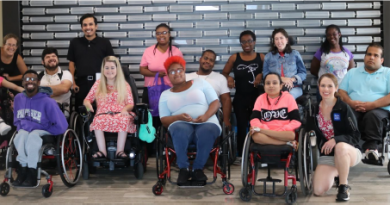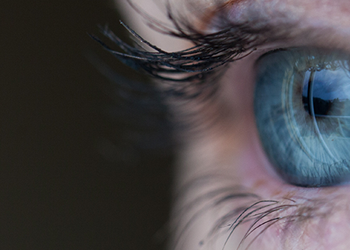Now launching: Space health
Space health research enables future human exploration missions like NASA’s crewed Artemis missions and later deep-space journeys. Learn how the Translational Research Institute for Space Health at Baylor College of Medicine is helping to advance these missions.
Commercial Space
As more people venture past Earth’s atmosphere, we must ensure that they will be able to remain healthy and reduce the risks that the space environment may present. With the exploration of space as an investment in humanity’s future, now comes new opportunities to advance understanding of the human body in extreme conditions and develop new technologies to improve life on Earth. Yet, critical gaps remain in what we know about protecting the health of humans in space and how to apply that knowledge to improve health on Earth. TRISH is investing in commercial space human health research to ensure all people that explore space are able to do so without compromising their health. Space exploration presents a multitude of different health challenges and the first step TRISH has taken to ensure people with all different medical backgrounds and histories are able to explore is by conducting scientific research aboard these newer commercial missions to space. Through TRISH’s EXPAND program, the Institute is leveraging public and private-sponsored spaceflights to create space health research opportunities and unify the resulting biomedical, environmental and research data in a database, including a biosample repository. Space biomedical research protects more than astronauts. It can bolster future national defense forces and aid scientists and civilians who may one day live and work in space.
Food and nutrition for long-duration space missions
Eating pre-packaged foods and not enough fresh foods in your diet can heavily impact your mental and physical well-being. Right now, astronauts on the International Space Station (ISS) are the only long-term space travelers that receive fresh foods on a frequent basis when resupply rockets are sent to the ISS. But what happens when a crew is physically too far for regular resupplies? Even pre-packaged food might not retain its full nutritional value for the duration of a late-stage Artemis mission to the Martian surface. TRISH is working on efforts to innovate the exploration food system that will translate to a benefit here on Earth, especially in food deserts and rural environments where a balanced, fresh food diet can be inaccessible. Their first step in this effort was recently hosting a workshop discussing the challenges crews may face in terms of sustaining life beyond the possibility of resupply. Watch the recordings here.
Radiation
While on Earth, the magnetic field surrounding our planet protects humans from harmful space radiation. Beyond this protective shield, space radiation can pose a significant risk to space explorers. Depending on the type and amount of radiation they are exposed to, they can experience radiation sickness, central nervous system effects, degenerative diseases and, most notably, an increased lifetime risk of cancer. On Earth, we’re exposed to a relatively minimal amount of radiation on any given day – but in space, astronauts on ISS are exposed to about 100 times that. Depending on the length of their mission, that could be anywhere between 150 to 6,000 chest x-rays worth of exposure. Therefore, it is imperative that the space life science community have the tools to study the effects of long duration, deep space exposure and test ways to prevent and mitigate its potential negative effects. The type of radiation found beyond Earth’s protective magnetic field is not possible to recreate on Earth. We understand the composition of the radiation environment from measurements taken during the Apollo missions as well as on Mars probes. However, the longest a human has been exposed to the radiation environment outside of Earth’s magnetic field is that of a 12-day Apollo mission. Upcoming Artemis missions provide an unprecedented opportunity to understand the risks of radiation exposure during deep space exploration as well as approaches to manage those risks.
SENTINEL is the TRISH effort to build automated microphysiological systems (MPS; also known as 3D tissue chips) that also have in-line sensing capabilities to self-regulate and provide data to the crew and scientists on the ground, thus overcoming the need to return sample to Earth for analysis. These MPS, tissue or organs-on–a-chip constructs have the potential to better characterize the risks of and enable countermeasure development to the deep space environment. This effort will greatly improve on the current methods of characterizing space exploration risks that rely on ground analogs and ISS, which is not exposed to the same kind of radiation that is found beyond low earth orbit. Successful research and technology development in this area would improve the capability to test the effects of the realistic, deep space radiation environment on a tissue as well as the impacts of medications or other interventions. In addition, these systems are also being matured and validated with the goal of facilitating personalized and precision medicine. One can imagine the day when physicians can use cells acquired from a patient to diagnose and test treatments on that individual’s engineered tissues and organs before ever having to introduce more risk to the patient. This is also the vision for space explorers given the remote, hostile and austere environment in which they live and work that requires certainty and disciplined risk management.
Launch into space with TRISH and CSM
As the field of space health heats up, stay connected to Baylor’s Center for Space Medicine and TRISH by signing up for its monthly newsletter. Stay up to date by joining TRISH’s monthly webinars in the fall and spring. The webinars tackle different aspects, challenges, and topics of space health. Keep up with CSM and TRISH announcements and follow the Institute on Facebook, the X platform, formerly known as Twitter, and LinkedIn.
By Madison Hever, senior communications associate for the Center for Space Medicine



